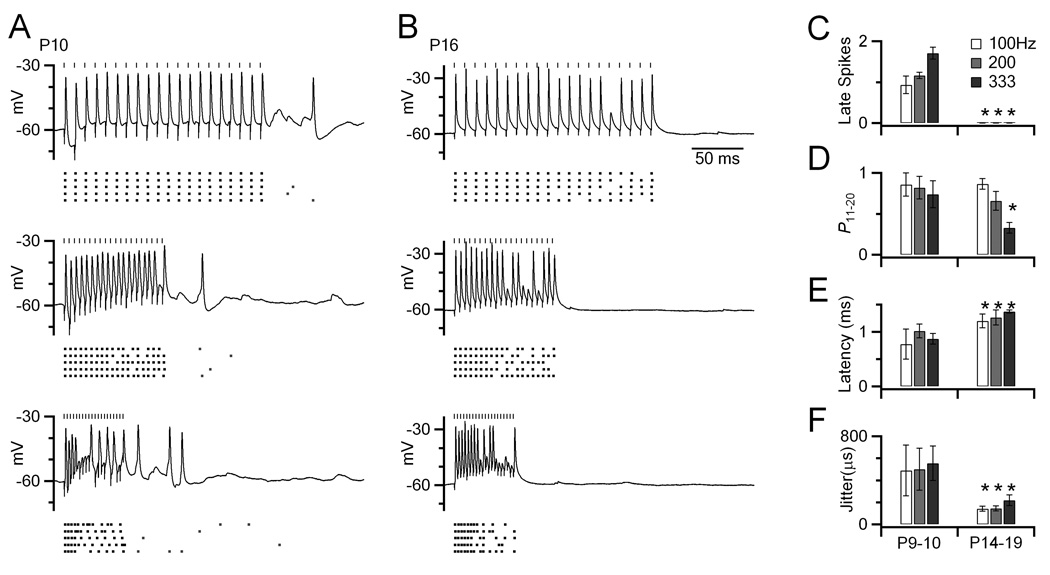Figure 1. Spikes are triggered in BCs long after the end of a train of synaptic activation in immature synapses, but not in older synapses.
(A) Example responses of a BC from a P10 slice. Presynaptic activation was done at 100, 200 and 333 Hz (vertical marks). The lower raster plots show the timing of spikes from 5 trials. These cells show the typical BC characteristic of undershooting action potentials (Oertel, 1983).
(B) Similar experiments in a P16 slice, showing no late spikes.
(C–F) Spiking behavior was quantified in cells before (P9–10, N = 5) and after (P14–19, N = 9) the onset of hearing. Quantified were late spikes (C), as well as spike probability (D), latency (E) and jitter (F) for pulses 11–20 of 20-pulse trains. Asterisks mark features that were significantly different in the older synapses (P < 0.05).

